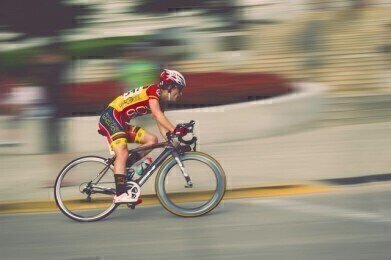News & Views
Does Cupping Help or Hurt Athletes?
Aug 12 2016
With each Olympics comes a new trend. Something that athletes wear or do that’s supposed to enhance their performance. At London 2012, it was Kinesio tape. A thin, brightly coloured tape that supposedly protects injured joints and aids movement. At Rio 2016, the phenomenon is ‘cupping’ – but not many people know what it is.
Cupping is the creation of suction points on the body using warm glass cups. The warm air inside the glass pulls the skin upwards as it cools, creating visible suction spots. But does it actually help the 2016 Olympians, or does it hurt them?
Cupping – the basics
The cupping process, which can be wet or dry, has actually been around since ancient Egyptian times. In Islamic Prophetic Medicine, wet cupping is known as Hijama. This involves extracting blood, while dry cupping is simply applying suction to the skin. Since the 1950s the treatment has become more common in Chinese medicine, as well as some other countries.
Soreness
Whether it’s wet or dry, cupping therapy involves latching several glass cups onto the skin – and so naturally, it isn’t going to be particularly pleasant. The suction causes the skin to go sore during and after cupping. US Olympic Swimmer, Natalia Coughlin even said she was “laughing because it hurts so bad”. Like a sports massage, it’s intense, but it provides relief to the athlete.
As for the benefits, some research suggests cupping is an effective form of pain relief. It’s also thought to carry physical and performance-based benefits such as muscle stimulation and blood-flow enhancement. If this is the case, the soreness of the skin will surely be a small price to pay. With big names like Michael Phelps and Andy Murray known to have used the treatment, it must be beneficial.
Performance enhancement
Much like the Kinesio tape, however, the research into the benefits is limited. But in both cases, there isn’t much of a reason for Olympians to avoid use of these techniques. One thing that’s strictly monitored in the Olympics is drug usage. Drug tests are carried out to ensure athletes aren’t using performance-enhancing drugs to gain an illegal advantage in the competition. So what is the procedure for drug testing? ‘From Sports Arena to Positive Drug Test – the Life of an Anti-Doping Urine Sample’ explores the process of anti-doping programmes – from sample collection, to the application of separation science and analysis.
Digital Edition
Lab Asia 31.2 April 2024
April 2024
In This Edition Chromatography Articles - Approaches to troubleshooting an SPE method for the analysis of oligonucleotides (pt i) - High-precision liquid flow processes demand full fluidic c...
View all digital editions
Events
Apr 28 2024 Montreal, Quebec, Canada
May 05 2024 Seville, Spain
InformEx Zone at CPhl North America
May 07 2024 Pennsylvania, PA, USA
May 14 2024 Oklahoma City, OK, USA
May 15 2024 Birmingham, UK


















